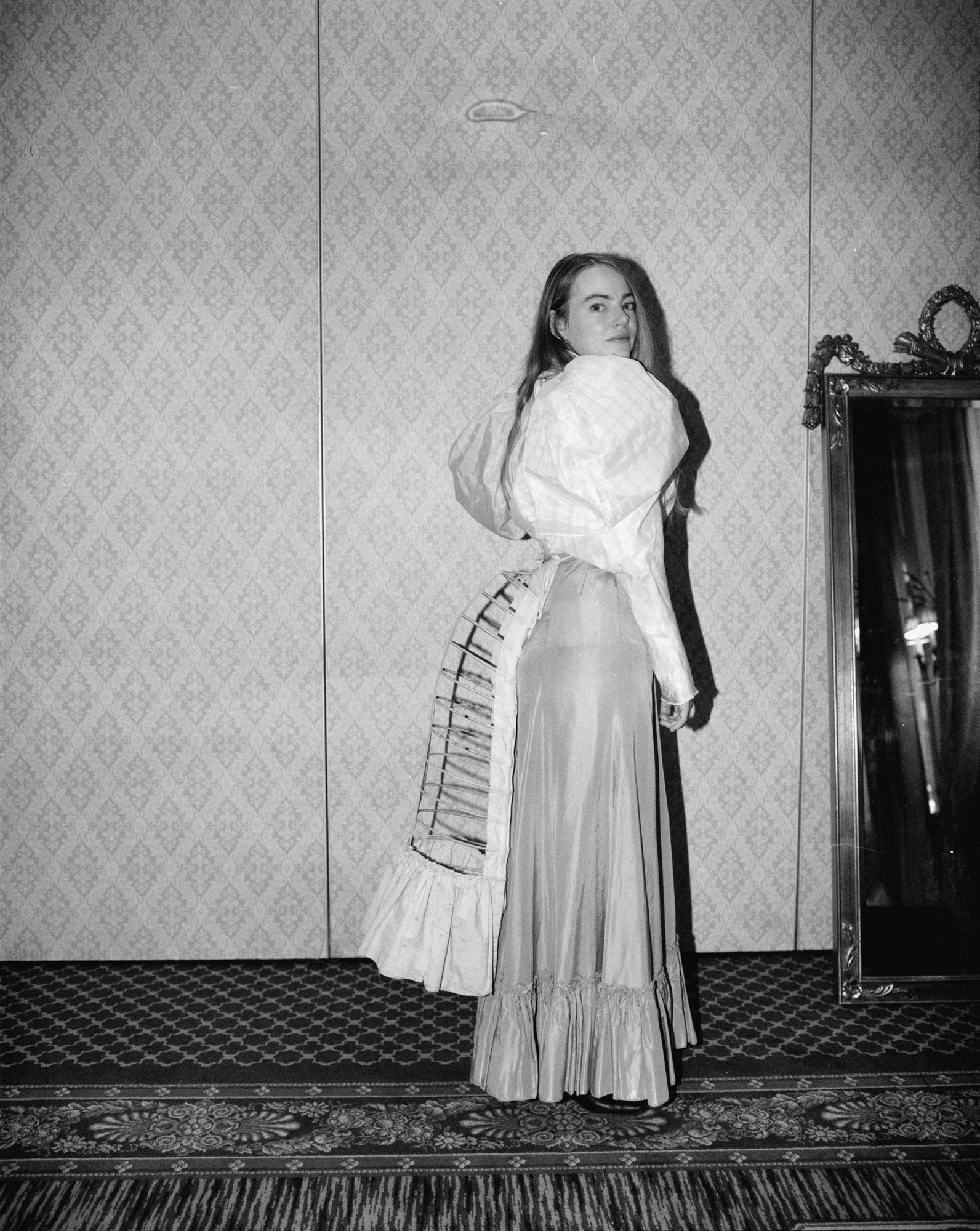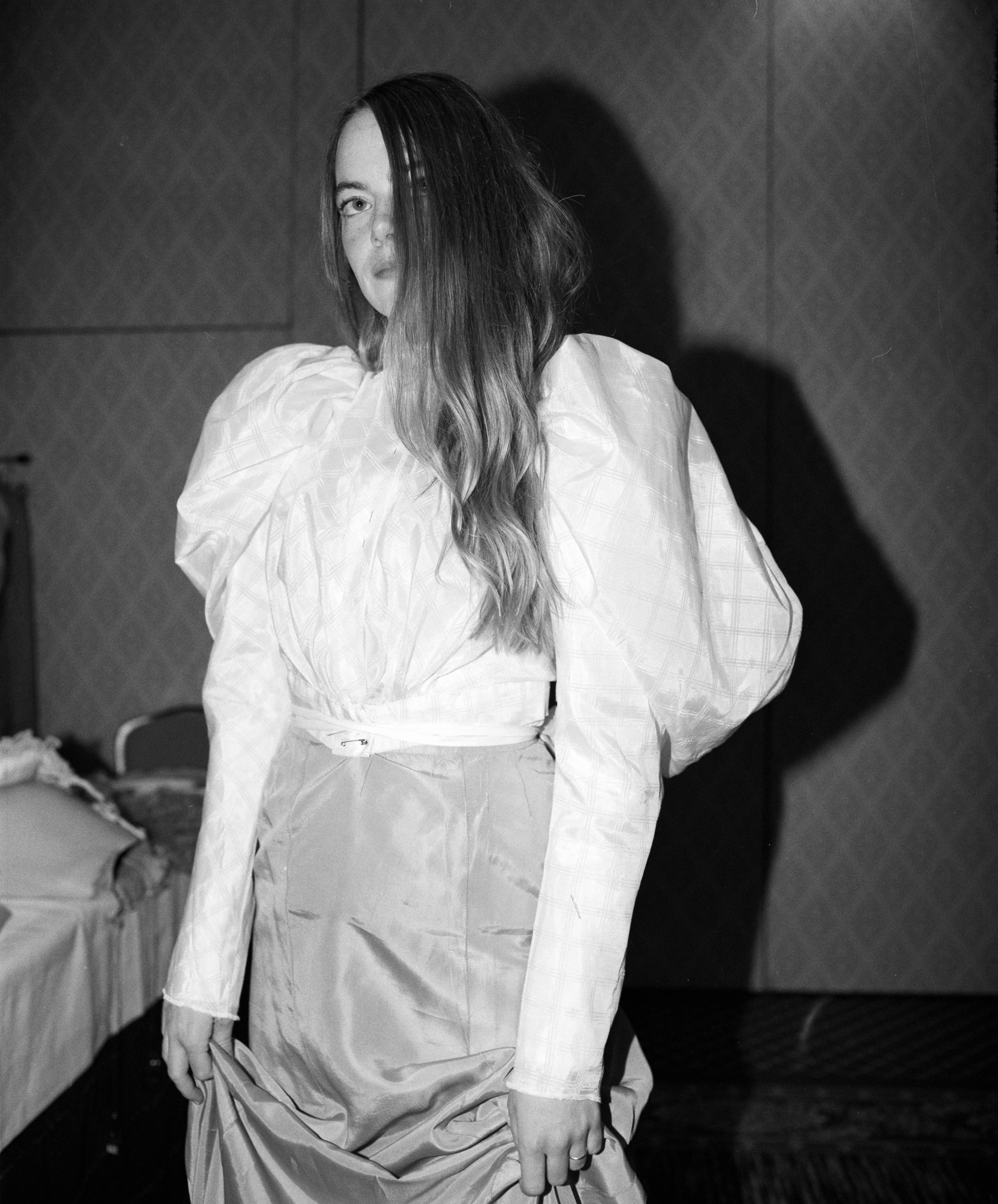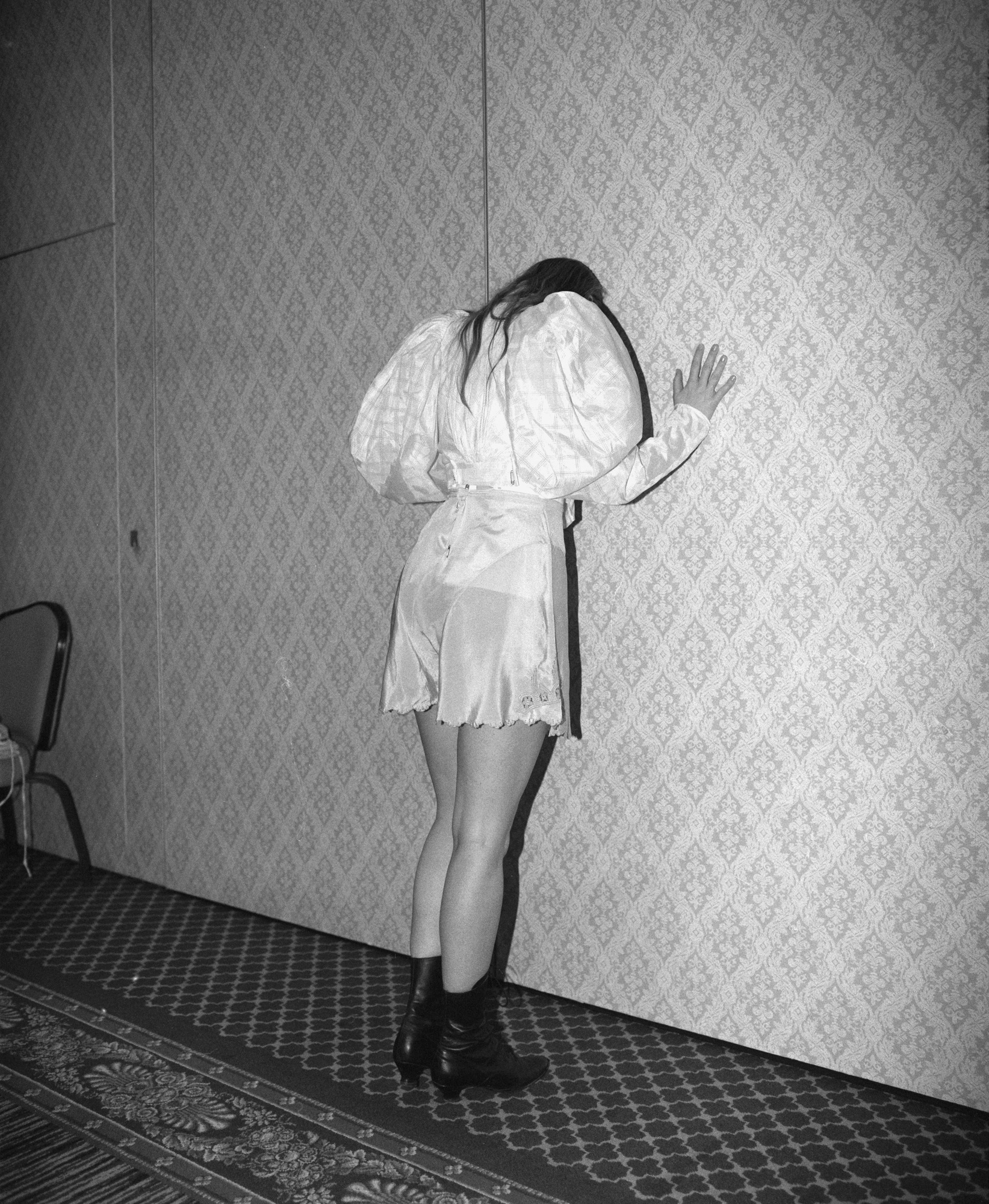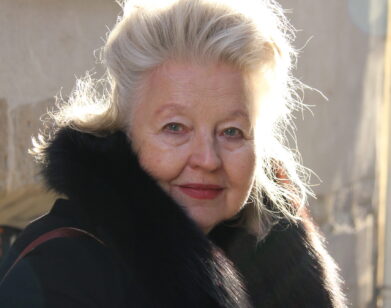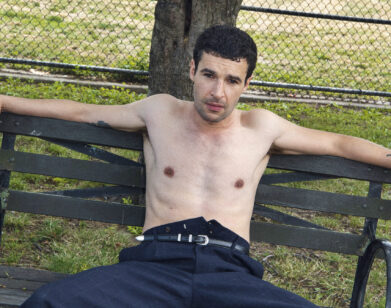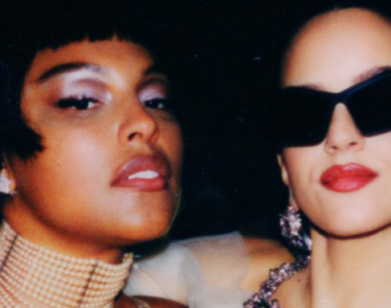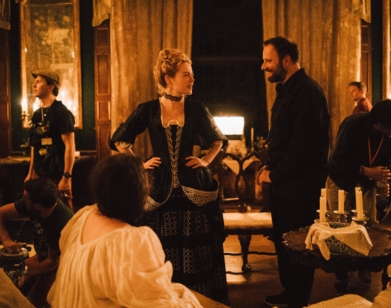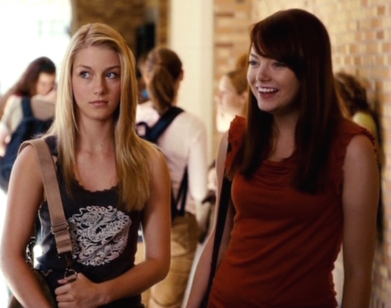DRESS UP
Condom Coats and Courrèges: Emma Stone Gets the Story Behind Her Favorite Poor Things Looks
From the moment it premiered at the Venice Film Festival, Poor Things has been the movie everyone wants to see and no one can stop talking about. Yorgos Lanthimos’ strange and sumptuous story of Bella Baxter, a reanimated woman with the brain of a child discovering the world, in all its wonder and horror, offers a lot to contemplate and even more to look at, imagining a gothic 19-century Europe filtered through a dreamy steampunk lens. At the forefront of this vision are the clothes, a concoction that melds Victorian tradition with space-age futurism. The talent behind the wardrobe, costume designer Holly Waddington, spoke to her star Emma Stone about how she pulled it off.
———
MONDAY 2 PM JULY 10, 2023 LONDON
EMMA STONE: Hi, Holly!
HOLLY WADDINGTON: Hello, Emily!
STONE: Nice to see you! It feels like it’s been like a decade.
WADDINGTON: I know! Where are you now?
STONE: We’re out in Long Island until the end of the month.
WADDINGTON: Lovely. So the film, I love it. Are you happy with it?
STONE: I love it so, so much.
WADDINGTON: I was really—I shouldn’t say surprised because obviously Yorgos [Lanthimos] was going to craft it so beautifully. But I was very moved by it. Your performance is extraordinary. The whole thing feels really epic.
STONE: It feels like a movie that you need to watch more than once because there’s so much going on visually. But Holly, this is about you, and we need to talk about what you did here. I was amazed by all of the creativity that was happening leading up to creating the costumes, but to see it onscreen was mind-blowing. I have some questions that I wrote down and I don’t know how to get into it in a casual way because I’m not a journalist, but I’m going to try. First off, how did you get involved?
WADDINGTON: I’d been working with Tony McNamara on The Great, and that was how I met Yorgos. I was already a huge fan of his work and was excited about the possibility of meeting him. Then I had to do some concept work for him. We would exchange a lot of ideas. After a long time of doing this, I was offered the job. We spent a lot of time coming up with very far-reaching ideas. Some of the renditions of what we were coming up with were nothing like what we ended up with. It was much more extreme, much more sci-fi.
STONE: I remember when we had that first try-on in Athens.
WADDINGTON: But even before then, we really blew it all out of the water and then started to calm it down into something that served the story.
STONE: Not to jump ahead too much, but the way that Bella evolves through her wardrobe, is so specific. We’ve obviously talked about this extensively, but for our reader, how did you parse through the beginning of her life to her full adulthood?
WADDINGTON: The beginning, I love that whole part, because she’s in a woman’s body, but she’s experiencing the world with the physicality and mind of a child. So the idea was to create an incongruous wardrobe that was as if she’d been dressed by Mrs. Prim in the morning. But when you have children, they just lose their clothes. Even if you dress them properly at 8 in the morning, by 10, bits are missing, underpants are on the head, they’ve got bits of fancy costumes on. So I liked this idea of it all disassembling. Going to that initial image where she’s at the piano in knickers and the big massive thingy, I thought we were going to make her really composed, like a lady. But then the decision, which was made quite close to the filming, was to start with this quite disassembled language. I really enjoyed putting that together. Things like that bubbly bustle that she wears.
STONE: I love that so much. Out in the garden with the knickers, the bubble tail, and the sunglasses.
WADDINGTON: It’s taking things that are very period and recomposing them in a sort of messy, playful way. Then there had to be this transformation into leaving home, so the idea was that she’d been dressed by Mrs. Prim in the traveling look, that’s all quite complete when they go to the oyster bar, but because she doesn’t have her maid with her anymore, the next time she goes out after they’ve had sex in the hotel, she just doesn’t put the skirt back on. So she’s in her knickers. Then that little ruffly thing that’s like a Victorian partlet, she just wears it like a crop top with a see-through petticoat. So there’s this whole journey where she’s getting it all wrong, but actually it looks really good.
STONE: It’s so good.
WADDINGTON: Those costumes are all very skewered. She’s got bits of things that should go under a blouse with a dressing gown in a hotel dining room. I’m just mixing it all up, which is not at all Victorian. Then she ends up in Paris in that condom coat, and then she has sex in it, and it’s like she’s in this giant condom. Then the next stage is this brothel wardrobe, then the student look, which was that jacket without the skirt. I think that was your idea.
STONE: I love that jacket so much.
WADDINGTON: Do you remember when we did the fitting, we were looking at the jackets and you just had your boots on. You just looked and said, should I just wear it like this?
STONE: It’s so great, and makes so much sense for her in that moment, piecing everything together on her own. But actually it’s evolving in Alexandria, which is a huge turning point for Bella, realizing there is pain and death in the world. It’s a real adultifying moment for her. She’s wearing that extremely beautiful, white piece at that moment, too, only for her whole world to break apart.
WADDINGTON: I remember having the conversation with Yorgos that it was very important that when she sees all of this extreme misery and sadness, that she isn’t in a playful costume, that she’s actually in something quite proper. That’s probably the only time we see her in a ladylike outfit, as if we were doing period drama. Even the wedding dress is missing a petticoat.
STONE: Yeah. Then when it comes to the men, what was your thinking on the difference between Godwin, as opposed to Max, as opposed to Duncan?
WADDINGTON: Godwin is the radical. Although, because of his disfigurement, he lacks a social confidence. So when he leaves the house, he dresses like any other Victorian man, only in head-to-toe oxblood. But then at home, he wears these boiler suits that are very unique to him, very progressive, not at all Victorian. They were inspired by this Russian constructivist artist, Alexander Rodchenko, who designed futurist fashion, and made himself these boiler suits with strips of plastic on, and pockets for putting all of his tools in. Duncan is more traditional in the way that he dresses because he isn’t massively progressive.
STONE: He thinks he is.
WADDINGTON: Max, he’s a poor boy, he doesn’t have the suits that the other students have at the university. He’s a bit dweeby, a bit tragic in the way he dresses. He has slightly unfortunate knickerbockers. He isn’t supposed to look sexy at the beginning, but he improves.
STONE: You were so detail-oriented. It was incredible to watch how specific you were about all of it. Which leads me to more of a macro question. Why did you become a costume designer?
WADDINGTON: Oh, it’s a good question. I have loved dressing up since being tiny. I also have a massive interest in history and the language of clothes, which I find endlessly fascinating.
STONE: It’s your natural passion.
WADDINGTON: Now I don’t dress myself up, I dress people like you up.
STONE: Did you see a film or anything at a young age where you just loved the costume design?
WADDINGTON: As a child, I spent a lot of time with my grandma, and the TV was often on. In England at the time they used to play Busby Berkeley musicals, spaghetti Westerns, lots of Ginger Rogers and Fred Astaire. I just loved those big, MGM, costume-y mega-musicals.
STONE: Yeah.
WADDINGTON: Then we’d go home, start tie-dyeing things, customizing things.
STONE: Because you have this relationship to texture and all of that, were you creating costumes to turn yourself into a mermaid? Or was it always very human things that you were drawn to?
WADDINGTON: I just liked having a mirror and pieces of clothing and letting something come about organically. But I turned out to not be very good at making clothes. I was really quite hopeless at it. But I went to art school and am much more naturally good at painting, drawing, and things that don’t need to be perfect. So it’s very important that I work with people who are very good at this stuff. They handle the technical aspects.
STONE: Like you were saying, this started during the pandemic in 2020. Then we made this film at the end of 2021, and you were in a different place than you usually are, with a different team than you usually work with. How was that experience for you?
WADDINGTON: It was very challenging. I know people who are working in Budapest now, and they just nip on a plane home to Portobello Market to get some antique buttons or some fabric. But we were really there. We couldn’t nip off to anywhere.
STONE: If you needed something from England, it took a month.
WADDINGTON: It did. And because of Brexit, loads of things were stuck in customs.
STONE: The only reason I was bringing that up is because obviously I knew up-close what an undertaking it was. I hope for you, it feels incredible to see how brilliantly executed it was after all of the daily meltdowns. The way it came together was just stunning.
WADDINGTON: I saw the film at Easter, and I really love it. Because I probably wasn’t expecting the costumes to work.
STONE: [Laughs]
WADDINGTON: I was sort of hopeful, but when something has been so challenging, you expect the worst.
STONE: Oh, I have to ask, but you know my favorite costume in the film?
WADDINGTON: What is it?
STONE: You know my favorite! My favorite costume I’ve ever worn! Ever.
WADDINGTON: We haven’t had any teases of that, have we? That’s being saved.
STONE: No. I’d just stay in that white dress all day, and that net! So I couldn’t really eat or drink once it was pinned in. But I’ve never worn something that beautiful.
WADDINGTON: Of course you have!
STONE: No! It was so delicate and it felt like every part of her coming together in this gauzy confection. I just loved it.
WADDINGTON: I also really like the pink raspberry blouse. We called it The Margarita.
STONE: [Laughs] They all had names. That’s what I love. Am I missing anything, you guys? I’m asking the magazine now.
WADDINGTON: The shoes. We haven’t talked about the shoes.
STONE: Let’s talk about the shoes.
WADDINGTON: That was actually Shona Heath who said, “I think she should always have her toes out.” They’re like an homage to André Courrèges, the ’60s fashion designer who did all those sci-fi clothes.
STONE: And those white patent boots with the peep toe at the front and the little holes at the top.
WADDINGTON: Do you remember in Athens, we found a lovely Victorian boot that suited you, then we hybridized it with a bit of a ’60s twist? The peep toe and the pearlized leather.
STONE: Yes, wow.
WADDINGTON: They looked good with the knickers and everything.
STONE: And those boots that I wore with the coat.
WADDINGTON: The ones made in Hungary, the pointy ones. Didn’t you want those?
STONE: Should I borrow them?
WADDINGTON: Yeah! For a screening or something. They’re very good on you. Well, I can’t wait to watch the movie again because it needs to be watched again and again on a big screen with huge volume.
STONE: It’s the most detailed film I’ve ever been a part of, for sure, and you were a big part of that. I’m just in awe of how you did it.
WADDINGTON: Thank you. I’m in awe of how you delivered that performance. That’s a whole other story.
STONE: Oh, man. Well, thank you for talking to me, Holly. This really has set my journalism career off with a bang.
WADDINGTON:This is a whole other career for you, isn’t it?
STONE: Yeah. For the day.

